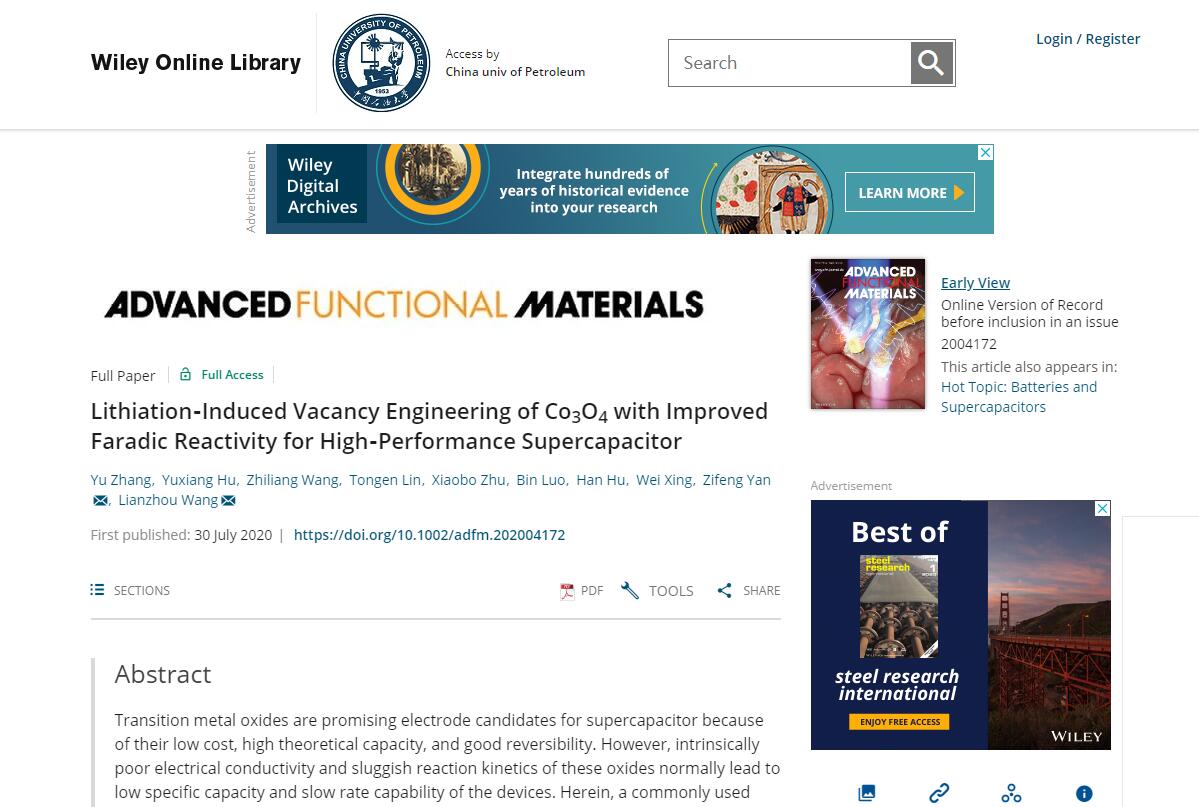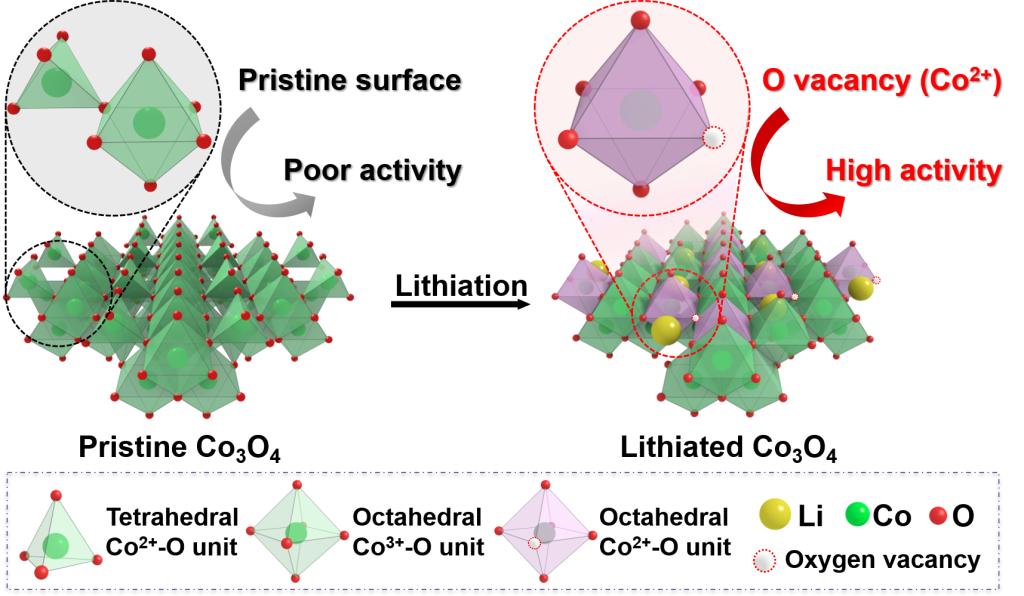Recently, Catalytic Materials Team of UPC has made new progress in the research of vacancy regulation of pseudocapacitive material in supercapacitor, cooperating with the University of Queensland in Australia. The paper Lithiation-Induced Vacancy Engineering of Co3O4with Improved Faradic Reactivity for High-Performance Supercapacitor, has been published by Advanced Functional Materials. The postdoctoral fellow ZHANG YU is the first author. China University of Petroleum (East China) is listed as the first institution. The project has been supported by the National Key R&D Program and Shandong Province Key R&D Program and CSC funding.

The ever-increasing dependence on electric vehicles and modern electronics stimulates the advance of cost-effective and safe energy storage devices. Featuring higher voltage window, hybrid supercapacitors deliver higher energy density than the conventional electrochemical double-layer capacitors andsuperior power performance compared to the Li-ion batteries, holding great promise for next-generation energy storage devices. Low-cost and natural abundant transition metal oxides (TMOs), typically those based on Mn, Fe, Co, and Ni, have been intensively studied as battery-type electrode material due to the multiple oxidation states that are available for the reversible redox reactions. Nevertheless, poor electrical conductivity and sluggish reaction kinetics are the main bottlenecks that constrain the energy storage capacity of TMOs. Recently, vacancy engineering, especially in the case of surface oxygen vacancies, has proven to be an effective approach to optimize the electronic structure, improve the number of active sites, and boost the electrochemical and catalytic performance. Methods like hydrogenation, chemical reduction, and plasma engraving were frequently reported to modulate oxygen vacancies of TMOs and therefore boost the capacitive performance. Unfortunately, the main barriers of these strategies are the high-energy consumption and lack of controllability of introduced oxygen vacancies. Therefore, a controllable and efficient vacancy engineering strategy is urgently needed for further breakthroughs in promoting the capacitive performance and future application of TMOs, but it is still a big challenge.

In response to the problems, the paper reported an electrochemical lithiation treatment to induce the insertion of lithium atom into the lattice of Co3O4for the first time, which weakens the coordination of the Co-O bond and generates abundant oxygen vacancies. First, the lithiation-induced oxygen vacancies andincreased carrier densities dramatically facilitate the electrode’s electrical conductivity. Second, the decreased adsorption energy of OH−on the lithiated surface accelerates the surface redox reactions, which in turn results in the highly improved surface reactivity. Third, the oxygen vacancies can act as electroactive sites to boost the charge storage capacity of transition metal oxide materials. Moreover, this method solves the technical challenges of high energy consumption and low controllability in the currently reported oxygen vacancy regulation strategies. The results show great application prospects in the fields of electrochemical energy storage and conversion, water splitting and photocatalysis.

Reviewers have given high praise of this paper and agreed on the outstanding innovation and application prospects of the research results. The paper is of great significance for the realization of the vacancy control of transition metal oxide materials.
The Catalytic Materials Team, led by Prof. Yan Zifeng, is mainly engaged in the research of catalytic materials and energy storage materials. It has extensive experience in the design and preparation of new catalytic materials. The research is concentrated on solving the basic physicochemical problems and technical bottlenecks of the catalytic materials and providing theoretical and technical support for their application in oil refining, chemical engineering and new energy technologies. In the past five years, the team has undertaken projects such as the National Key Research and Development Program, the National Natural Science Foundation of China, the Shandong Natural Science Outstanding Youth Fund, the Shandong Province Natural Science Major Basic Research Project, and the Shandong Taishan Scholars Young Expert Program. More than 30 papers have been published in international authoritative journals, such as Energy & Environmental Science, Advanced Functional Materials, Nano Energy, ACS Cata., and so on.
The full text can be found by the following link:
https://onlinelibrary.wiley.com/doi/abs/10.1002/adfm.202004172

 +86 86981731
+86 86981731
 66 Changjiang West Road, Huangdao District,Qingdao City, Shandong Province
66 Changjiang West Road, Huangdao District,Qingdao City, Shandong Province
 weimengji@upc.edu.cn
weimengji@upc.edu.cn
